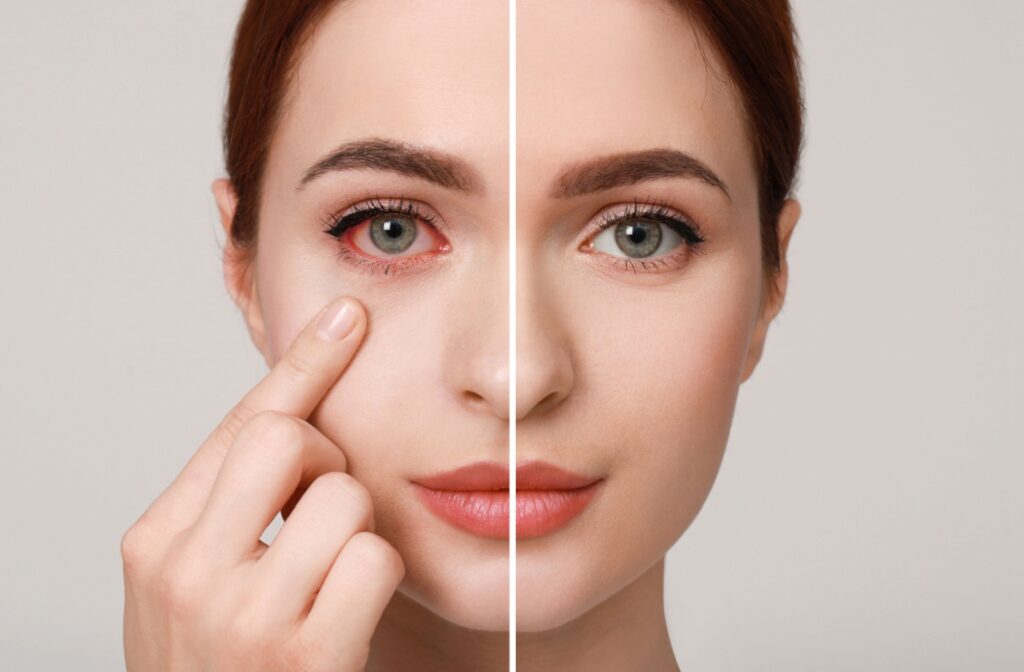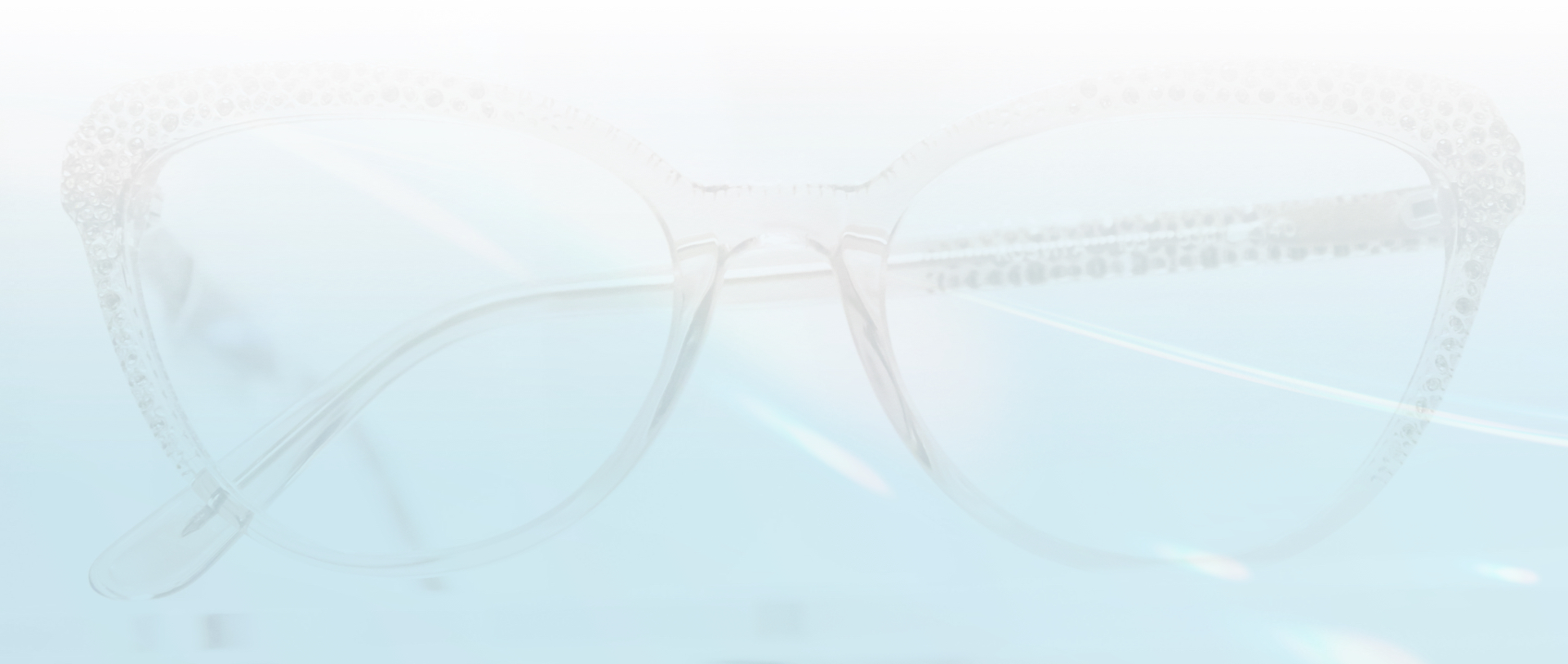Blepharitis and pink eye both cause red, irritated eyes, but they stem from different sources and require different treatments. Blepharitis is a chronic inflammation of the eyelid margins, while pink eye is an infection or irritation of the conjunctiva, the thin membrane covering the white part of the eye. Although the symptoms can overlap like redness, itching, and discharge, understanding what sets them apart is key to finding relief. Recognizing the differences can help you take the right steps toward managing symptoms and protecting your eye health.
What is Pink Eye?
Pink eye, or conjunctivitis, is an inflammation or infection of the conjunctiva. This thin, transparent layer lines the inside of the eyelids and covers the white part of your eyes. It is highly contagious and can easily spread in crowded environments like schools or workplaces. Pink eye affects individuals of all ages but occurs most commonly in children.
Types of Pink Eye
There are three primary types of pink eye, each with unique causes:
- Viral Pink Eye
- Often associated with the common cold and transmitted by direct or indirect contact with eye discharge.
- Highly contagious and typically resolves on its own within 1 to 2 weeks.
- Bacterial Pink Eye
- Caused by bacterial infections, resulting in more noticeable and severe symptoms such as thick, yellow-green discharge.
- Regularly requires antibiotic treatment to clear up the infection.
- Allergic Conjunctivitis
- Triggered by allergens like pollen, pet dander, or dust.
- Unlike viral or bacterial conjunctivitis, allergic pink eye is not contagious and is often seasonal.
Symptoms of Pink Eye
Common symptoms include:
- Redness and irritation: Due to inflammation of the conjunctiva.
- Itching: Particularly present in allergic pink eye.
- Excessive Tearing: Often related to allergic and viral conjunctivitis.
- Discharge: Watery discharge for viral cases vs thicker, yellow/green secretion in bacterial forms.
- Swelling: Mild eyelid swelling, most pronounced in bacterial infections.
- Crusting: Frequently associated with bacterial pink eye, leading to crusty eyelids upon waking.
Treatments for Pink Eye
The treatment depends on its type:
- Viral pink eye: Typically resolves without medical intervention. Warm compresses and lubricating eye drops can alleviate symptoms. Practice good hand hygiene to prevent spreading it.
- Bacterial pink eye: Requires antibiotic eye drops or ointments prescribed by an eye doctor. Avoid using contact lenses until fully healed.
- Allergic pink eye: Managed with antihistamine or anti-inflammatory eye drops. Identifying and minimizing exposure to triggers is key for prevention.
If symptoms worsen or persist, it’s recommended to consult an eye doctor immediately.
What is Blepharitis?
Blepharitis is an inflammation of the eyelids, particularly around the base of the eyelashes, where the oil glands may become clogged. Unlike pink eye, blepharitis is often chronic and requires ongoing management to prevent flare-ups. It’s not contagious but can be linked to skin conditions like rosacea or dandruff.
Symptoms of Blepharitis
Common signs include:
- Red, swollen eyelids: A hallmark feature of blepharitis caused by inflamed oil glands.
- Itching and discomfort: Persistent eyelid irritation.
- Crusty eyelashes: Flakes or crusts visible near the base of lashes, especially in the morning.
- Dry eyes: Due to disrupted oil production in the tear film.
- Excessive tearing: A reflexive reaction to dryness and irritation.
Causes of Blepharitis
Blepharitis is often tied to:
- Malfunctioning oil glands in the eyelids.
- Overgrowth of bacteria on the eyelid margin.
- Associated skin conditions, such as eczema or dandruff.
Treatment of Blepharitis
Managing blepharitis involves establishing a consistent eyelid hygiene routine:
- Warm Compresses: Place a warm, damp cloth on your closed eyes for 5-10 minutes to loosen debris and unclog oil glands.
- Eyelid Cleaning: Using a mild cleanser or medicated eyelid wipes to remove oil and crust buildup.
- Medicated Treatments (for severe cases): Antibiotic ointments or steroid drops may be prescribed by an eye doctor.
For ongoing control, avoid eye makeup during flare-ups, and use hypoallergenic makeup once symptoms improve. Address any underlying skin conditions like dandruff to reduce recurring inflammation.
Main Differences Between Blepharitis & Pink Eye
Pink eye and blepharitis may share some similar symptoms, but they differ in important ways. Pink eye is typically caused by an infection, either viral or bacterial, or by allergens, and it is often contagious, especially in viral and bacterial forms. Symptoms usually include redness, tearing, discharge, itching, and swelling.
In contrast, blepharitis is not contagious and is caused by chronic inflammation, clogged oil glands, or underlying skin conditions like rosacea or dandruff. It often presents as red, itchy, swollen eyelids with flaky skin or crusty eyelashes.
Treatment for pink eye depends on the underlying cause, whether viral, bacterial, or allergic, while blepharitis requires consistent eyelid hygiene and symptom management. Knowing these differences can guide you toward the right care and reduce the risk of worsening symptoms or spreading infection.
Tips for Eye Health
Whether you’re dealing with pink eye, blepharitis, or simply looking to maintain healthy eyes, these preventative tips can be valuable:
- Wash your hands frequently: Prevent infections by reducing the transfer of bacteria and viruses.
- Avoid touching your face: Reduce irritation and potential transfer of germs to your eyes.
- Replace makeup regularly: Expired makeup can harbor bacteria. Use hypoallergenic, non-comedogenic products to avoid irritation.
- Clean contact lenses properly: Always follow your eye doctor’s recommendations for contact lens care.
- Manage skin conditions: Addressing dandruff or rosacea can alleviate blepharitis symptoms.
- Get regular eye exams: Visit an eye doctor for comprehensive care and early detection of issues.
Take Action for Healthier Eyes
Proper diagnosis and early treatment are essential for keeping your eyes healthy and free from discomfort. Whether you’re experiencing irritation, redness, or itching, understanding the difference between pink eye and blepharitis can help you make informed decisions for effective care.
Book an appointment with McCauley Celin Eyecare Associates today to address your eye concerns with expert care. Your eyes deserve nothing less!














